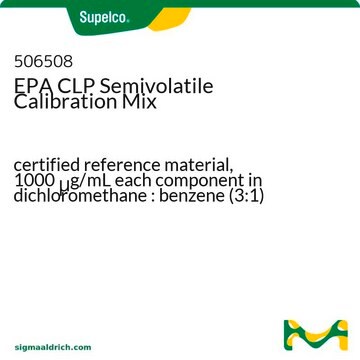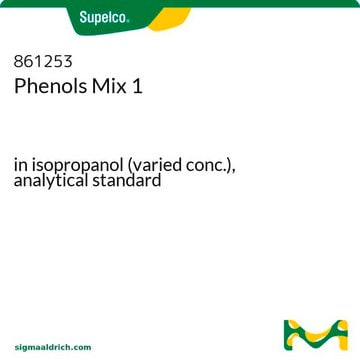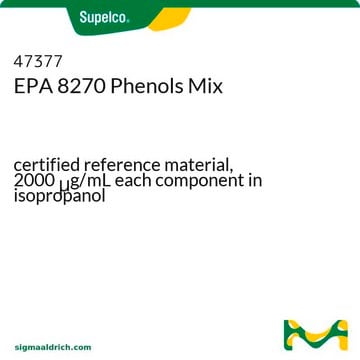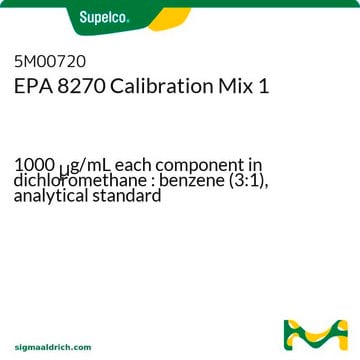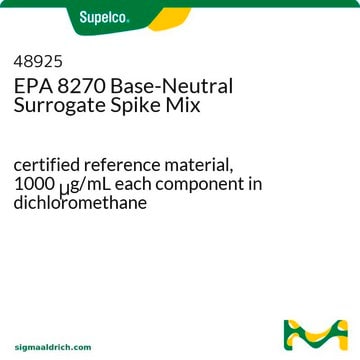46853-U
EPA 8270 LCS Mix 1
100 μg/mL each component in acetone: methylene chloride (9:1), analytical standard
About This Item
Polecane produkty
klasa czystości
analytical standard
agency
EPA 8270
Certyfikat analizy
current certificate can be downloaded
Właściwości
standard type calibration
opakowanie
ampule of 25 mL
stężenie
100 μg/mL each component in acetone: methylene chloride (9:1)
metody
HPLC: suitable
gas chromatography (GC): suitable
Zastosowanie
environmental
format
multi-component solution
temp. przechowywania
-10 to -25°C
Powiązane kategorie
Opis ogólny
Zastosowanie
Analit
Hasło ostrzegawcze
Danger
Zwroty wskazujące rodzaj zagrożenia
Zwroty wskazujące środki ostrożności
Klasyfikacja zagrożeń
Carc. 2 - Eye Irrit. 2 - Flam. Liq. 2 - Skin Irrit. 2 - STOT SE 3
Organy docelowe
Central nervous system
Kod klasy składowania
3 - Flammable liquids
Klasa zagrożenia wodnego (WGK)
WGK 2
Temperatura zapłonu (°F)
-2.2 °F
Temperatura zapłonu (°C)
-19 °C
Środki ochrony indywidualnej
Eyeshields, Faceshields, Gloves, type ABEK (EN14387) respirator filter
Choose from one of the most recent versions:
Masz już ten produkt?
Dokumenty związane z niedawno zakupionymi produktami zostały zamieszczone w Bibliotece dokumentów.
Klienci oglądali również te produkty
Nasz zespół naukowców ma doświadczenie we wszystkich obszarach badań, w tym w naukach przyrodniczych, materiałoznawstwie, syntezie chemicznej, chromatografii, analityce i wielu innych dziedzinach.
Skontaktuj się z zespołem ds. pomocy technicznej